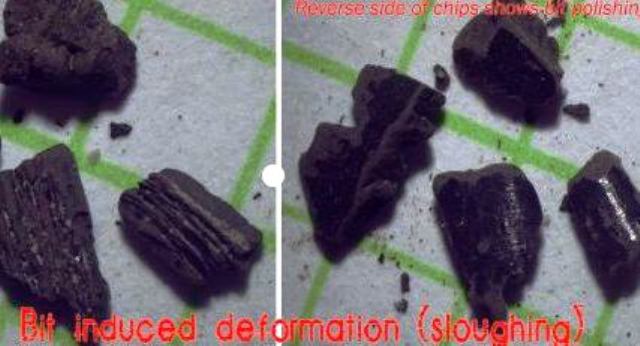


Sloughing shales solution or heaving shales were encountered in ATDM Gilsonite Co. operations in the Hackberry Field, La. during the late 1960’s. . Numerous fishing jobs because of sloughing shales plagued drilling operations, and the costs of reaming tight holes and weighting up the drilling fluids raised drilling costs substantially. One of the most common solutions to the problem was the use of relatively high mud weights, but this resulted in slow penetration rates, high mud costs, and high total well costs while drilling the normally pressured shale formations. The Hackberry field is located in southwestern Louisiana on one of the many piercement salt domes present in the Gulf coast area.
Wells included in this study are in the 9,500 to 12,500 ft range. The section is characterized by a long sand-shale sequence of recent to Miocene age formations from the surface to about 9,500 ft. Below, a predominately Oligiocene shale section of about 1,500 ft long is encountered prior to penetrating the normally pressured objective, the Camerina sand. It is this long shale section that has the tendency to slough and cause hole problems. The formations dip in excess of 50° and it is believed that the high dip angle is at least partially responsible for the heaving problems since equivalent age formations of normal dips have been drilled in other areas without problems. The temporary solution to the problem was raising the mud weight, to 12.5 pounds per gallon (ppg) opposite a 9.0 ppg equivalent formation. This contributed to increase drilling costs because of low penetration rates.
ATDM Gilsonite Co group was asked to find a solution to the shale problem. One solution to the problem would be to add a material to the mud before the problem shale was penetrated to retard filtrate invasion along the microfractures and bedding planes. The research group indicated that Gilsonite , a naturally occurring mineral, dispersed throughout the mud system as fine particles, would extrude by a plastic-flow mechanism into the pores, bedding planes and microfractures. Once in place, it would reduce fluid invasion and bond the matrix of the formation to prevent sloughing. Looking at the well temperatures, the lab recommended a softening point Gilsonite around 338°F along with a special wetting agent they designed to prevent balling of the product. The research laboratory indicated that Gilsonite was superior from both a temperature and purity standpoint than the blown asphalts. The recognition by the lab of the formation sensitivity to Gilsonite softening point and the development of a good surfactant was the initial work on Gilsonite investigation which later led to the development of Bore-Plate , a blended Gilsonite with a strong surfactant.
As a result of the research center’s recommendation, Gilsonite was used successfully in the mud system without encountering any problems of sloughing shale. In 1970, a decision was made to begin lowering the mud weights from 12.5 ppg in 0.5 ppg increments to determine if the shale would remain stable and determine what mud weights would be required using a treatment of 5.0 pounds per barrel (ppb) Gilsonite. 14 wells were successfully drilled with mud weights as low as 10.5 ppg with no serious problems resulting from shale sloughing. As a result, drilling penetrations were increased and borehole problems relating to shales were minimized.
The average cost per foot of the wells drilled with Gilsonite was reduced by 43.3% compared to the wells without Gilsonite. ATDM reported savings amounting to $623,000 (1971 US dollar value). A study of the shale cuttings from the wells indicated the Gilsonite performed by extruding into the bedding planes, voids, and microfractures. By this mechanism, the Gilsonite both inhibits mud-filtrate loss and bonds the shale together. ATDM has used Gilsonite and later Bore-Plate in many other wells in southwestern Louisiana with success when experiencing sloughing shale problems. Normal treatments were 5-6 ppb. Other case histories of the use of Bore-Plate to minimize sloughing shales have been demonstrated throughout the world in both soft and hard formations.